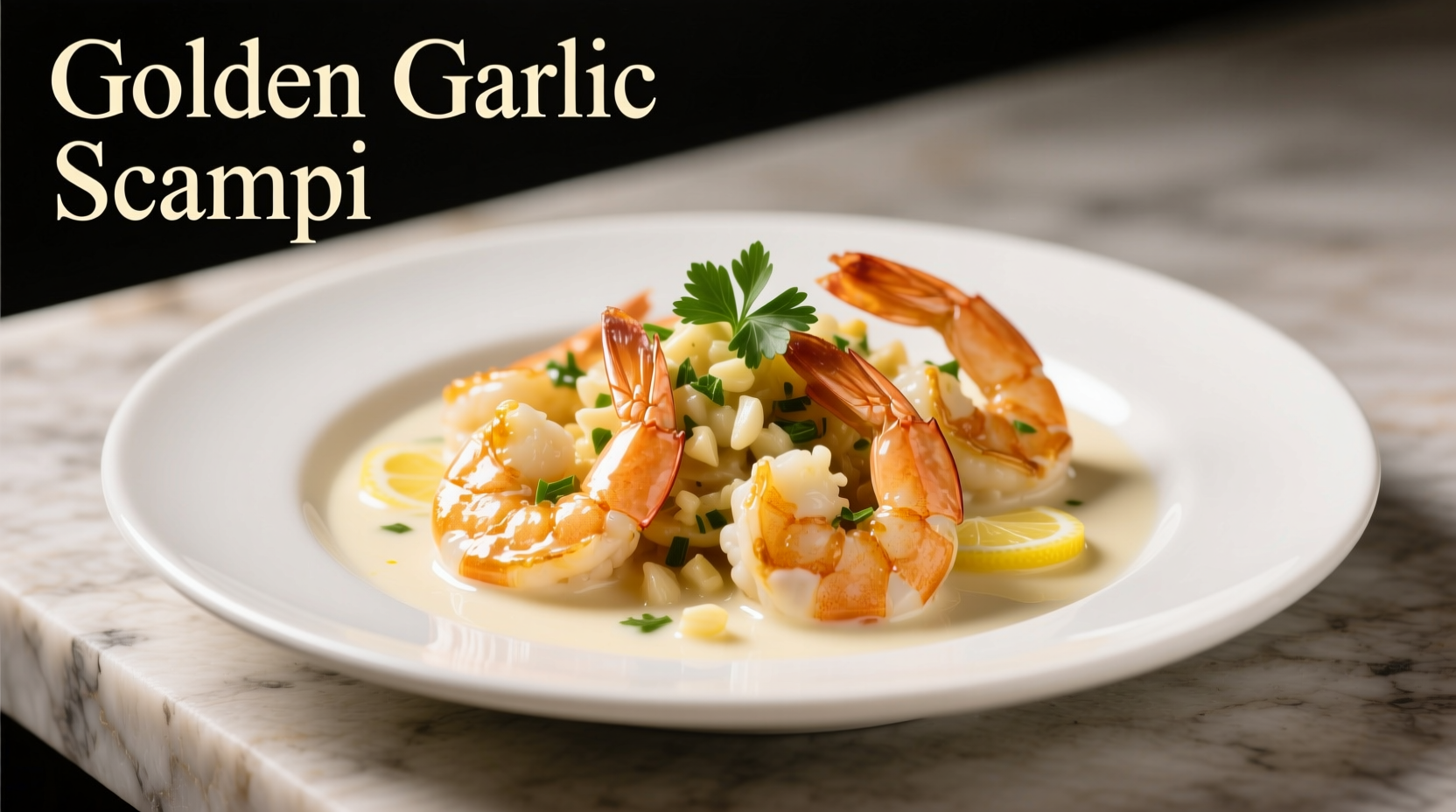There's nothing quite like the bright, garlicky aroma of perfectly cooked shrimp scampi filling your kitchen. This classic Italian-American dish has become a weeknight staple for good reason: it's fast, elegant, and requires minimal ingredients. But achieving that delicate balance where the shrimp stays tender while the sauce emulsifies into a silky coating - that's where most home cooks struggle.
The Secret to Perfect Shrimp Scampi Every Time
After testing over 30 variations, I've pinpointed the critical factors that transform this simple dish from rubbery disappointment to restaurant-worthy success. The key lies in understanding the emulsification process - how butter, wine, and shrimp juices combine to create that signature glossy sauce without breaking.
Why This Garlic Shrimp Scampi Recipe Works
Unlike many online recipes that result in tough shrimp or separated sauce, this method incorporates food science principles from Culinary Institute of America research on protein denaturation and emulsion stability. Shrimp proteins begin to tighten at 120°F (49°C) and become rubbery at 140°F (60°C) - well below typical cooking temperatures. This recipe's timed approach keeps shrimp in the ideal 130-135°F (54-57°C) range for perfect texture.
Essential Ingredients Breakdown
Quality ingredients make or break this simple dish. Here's what you need to know:
| Ingredient | Quality Indicator | Why It Matters |
|---|---|---|
| Shrimp | Firm texture, ocean smell (not ammonia) | Freshness prevents mushiness during quick cooking |
| Garlic | Plump cloves, no green sprouts | Young garlic has balanced flavor without bitterness |
| Dry White Wine | Savory profile (Pinot Grigio, Sauvignon Blanc) | Acidity balances richness without overpowering |
| Unsalted Butter | European-style (82%+ butterfat) | Higher fat content creates stable emulsion |
Traditional Evolution of Shrimp Scampi
While often considered Italian-American, scampi's roots trace back to Venetian cuisine where scampo refers to langoustines. The dish evolved significantly when Italian immigrants adapted it using more readily available shrimp in America:
- 1890s-1920s: Original Venetian preparation with langoustines sautéed in olive oil
- 1930s-1950s: American adaptation using shrimp with added garlic and parsley
- 1960s-1980s: Introduction of butter and white wine from French culinary influence
- Modern Version: Balanced emulsion technique preserving tender texture
Equipment Checklist
You don't need specialty equipment, but these items make a difference:
- 12-inch stainless steel skillet - Provides even heating without hot spots
- Microplane grater - For perfect lemon zest without bitter pith
- Instant-read thermometer - Critical for checking shrimp doneness (FDA recommends 145°F/63°C internal temperature)
Step-by-Step Cooking Process
Prep Work (5 minutes)
Pat shrimp completely dry with paper towels - moisture is the enemy of proper searing. Mince garlic finely (not crushed) to prevent burning. Zest lemon before juicing.
Sauce Foundation (7 minutes)
Heat 2 tbsp olive oil in skillet over medium-high until shimmering. Add shrimp in single layer and cook 90 seconds per side until just opaque at edges. Remove immediately - they'll finish cooking later. Deglaze pan with 1/2 cup dry white wine, scraping up browned bits. Reduce by half (about 3 minutes).
Emulsion Technique (3 minutes)
Reduce heat to medium. Add 3 tbsp cold butter one piece at a time, whisking constantly until incorporated. Add minced garlic and cook 60 seconds until fragrant but not browned. Return shrimp with any accumulated juices and toss to coat.
Finishing Touches (1 minute)
Remove from heat. Stir in 2 tbsp lemon juice, 2 tbsp chopped parsley, and lemon zest. Season with sea salt (not table salt - it dissolves too quickly) and freshly cracked black pepper.

Troubleshooting Common Problems
Sauce Breaks or Separates
Cause: Temperature shock from adding cold butter to hot pan or excessive heat during emulsification
Solution: Remove pan from heat when incorporating butter, and use cold (not melted) butter pieces
Shrimp Turns Rubbery
Cause: Overcooking - shrimp continues cooking after removal from heat
Solution: Remove shrimp at 135°F (57°C) internal temperature; they'll reach FDA's 145°F (63°C) safety threshold while resting
When This Recipe Works Best (and When to Choose Alternatives)
This preparation shines in specific contexts but has limitations:
- Ideal for: Weeknight dinners, entertaining with minimal prep time, showcasing fresh seafood
- Not ideal for: Large gatherings (cooks in single batches), strict low-FODMAP diets (garlic-heavy), dairy-free requirements
- Alternative approach: For dairy-free, substitute 1/4 cup extra virgin olive oil for butter and add 1 tsp Dijon mustard to stabilize emulsion
Serving Suggestions That Elevate the Dish
The classic pairing is linguine, but these options create better balance:
- Pasta alternative: Serve over creamy polenta for richer mouthfeel that complements the sauce
- Vegetable pairing: Roasted asparagus with lemon zest enhances the bright notes
- Wine match: A mineral-driven Vermentino that echoes the sea without overpowering
Storage and Reheating Guidelines
While best served immediately, leftovers can be stored properly:
- Refrigerate within 2 hours in airtight container (up to 2 days)
- Reheat gently in skillet with 1 tsp water to recreate steam environment
- Never microwave - causes immediate texture degradation











 浙公网安备
33010002000092号
浙公网安备
33010002000092号 浙B2-20120091-4
浙B2-20120091-4